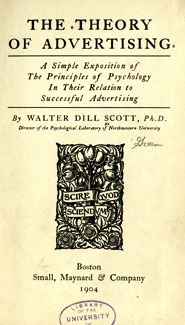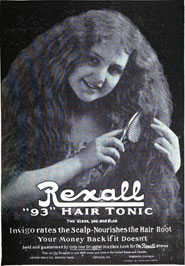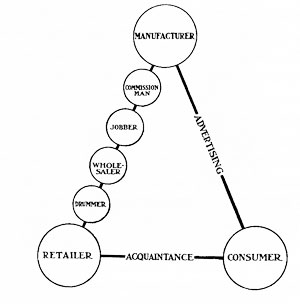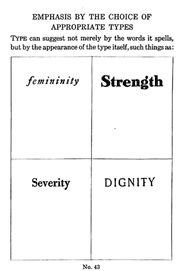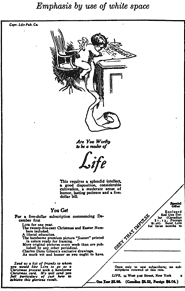| The Sciences of Advertising | |||
|
|
|
|
| Psychology & Advertising "As early as 1896, experimental psychologists began studying the mental processes involved in advertising. The first psychological theory of advertising maintained, in effect, that the consumer was a nonrational, suggestible creature under the hypnotic influence of the advertising copywriter. Walter Dill Scott was the major proponent of this theory, and it was largely through his writings that advertising men learned about the psychology of suggestion. Scott's theory was consistent with a growing trend in the advertising profession toward viewing consumer behavior as irrational. Scott's efforts might also be viewed as part of the trend in the advertising profession toward seeking a scientific basis for copy writing theory and practice."1 |
Walter Dill Scott Psychologist and professor Walter Dill Scott's study of psychology as an important element in advertising was published in several books, the first The Psychology of Advertising in Theory and Practice : A Simple Exposition of the Principles of Psychology in Their Relation to Successful Advertising. (1902) As part of his work he questioned consumers about their reactions to various advertisements, the beginning of market research. In the advertising magazine, Printers Ink, he declared "The successful advertiser, either personally or through his advertising department, must carefully study psychology. He must understand how the human mind acts. He must know what repels and what attracts. He must know what will create an interest and what will fall flat. He must be a student of human nature and he must know the laws of the human mind." |
Ernest Elmo Calkins "American forged from her press a power which has made her shop keeping the most wonderful in the world. The shop and the newspaper joined forces and the result is modern advertising." ...Calkins His Business Triangle from The Art of Modern Advertising, 1905. Caukins made the link between advertising and the consumer, retailer and manufacturer. "The mediums have been analyzed and classified; the goods manufactured, wrapped and named with a better idea of the purchaser's habits and needs, the consumers located and studied; their purchasing power tabulated; their shopping habits ascertained."
|
Caukins's diagram illustrated the necessity for successful modern manufacturers to utilize both an identifiable trademark and advertising to directly reach potential customers. The customers would then request the advertised products from their retailers and remove the intermediaries—jobber, wholesaler, etc who previously determined what products would be carried by the retailer. |
| Typography for Advertising | |||
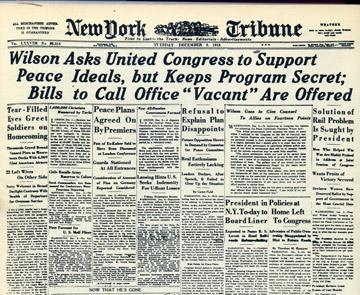 |
|
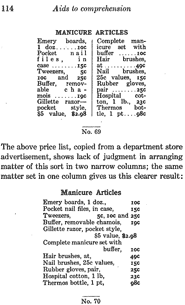 |
|
Benjamin Sherbow (1878-1922) Sherbow worked as a copywriter for Elmo Calkins (above right) in the Calkins and Holden advertising agency. According to his obituary "Mr. Sherbow is said to have been probably the first person to occupy the position of typographer in an advertising agency." As Paul Shaw points out, "This claim probably derives from one that Calkins made that Sherbow was the first person to style himself a typographer, whether in advertising or any other branch of printing and the graphic arts. This occurred c. 1907. Certainly Sherbow was already famous enough that the young W.A. Dwiggins, in passing through New York in 1908, made sure to visit him." 3 |
"Sherbow left Calkins & Holden to work as a typographic consultant. One of his most famous consultations was with the New York Tribune".. What Sherbow had done was to advise the newspaper to shift from headlines in all caps to upper-and-lower case; and to use ATF Bodoni. This revolution, as Hutt styled it, caught on with other American newspapers, albeit slowly, and eventually became the norm...(However, the December 3, 1918 front page of the New York Tribune reproduced on p. 96 of Hutt's book does not show ATF Bodoni used for the main head, only for the subheads. Instead, the typeface is a chunky old style italic in the Cheltenham vein."3 |
Making Type Work Sherbow's text, Making Type Work, focuses "on advertising typography, though Sherbow takes many of his precepts from Theodore Low DeVinne. ...Sherbow's method is to show examples of bad typography followed by his improved versions. He constantly changes the typography of his book to make clear his views on type size, letter spacing, word spacing, line spacing, etc."3 |
|
| The Manipulation of Female Images in Advertising | |||
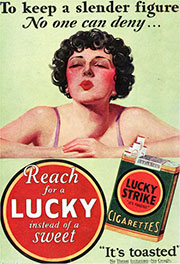
|
For those of you who watch Mad Men you may recall Don Draper and his process of conceptualizing the "It's Toasted" campaign. The slogan was actually already in existence many decades before the imaginary 60's TV show as seen at the base of the Lucky Strike ad aimed at women. Here we see the cigarette offered to women as an aid for weight loss. All part of the decades old campaign to reinforce the mandate that women must stay slender at all costs.
|
||
| Footnotes | |||
| 1 US Library of Medicine, Abstract, The concept of suggestion in the early history of advertising psychology. Kuna DP. |
2 Earnest Elmo Calkins; Ralph Holden, The Art of Modern Advertising, London:S. Appleton, 1905. |
3 Excerpts from Paul Shaw "From the Bookcase no. 3, Making Type Work, retrieved 8.7.12 Link |
4 Images from Making Type Work on Google Books. Link |
| Copyrights | |||
| ©Designhistory.org 2011 | For Permission Info click here | ||
|
|
|
|

